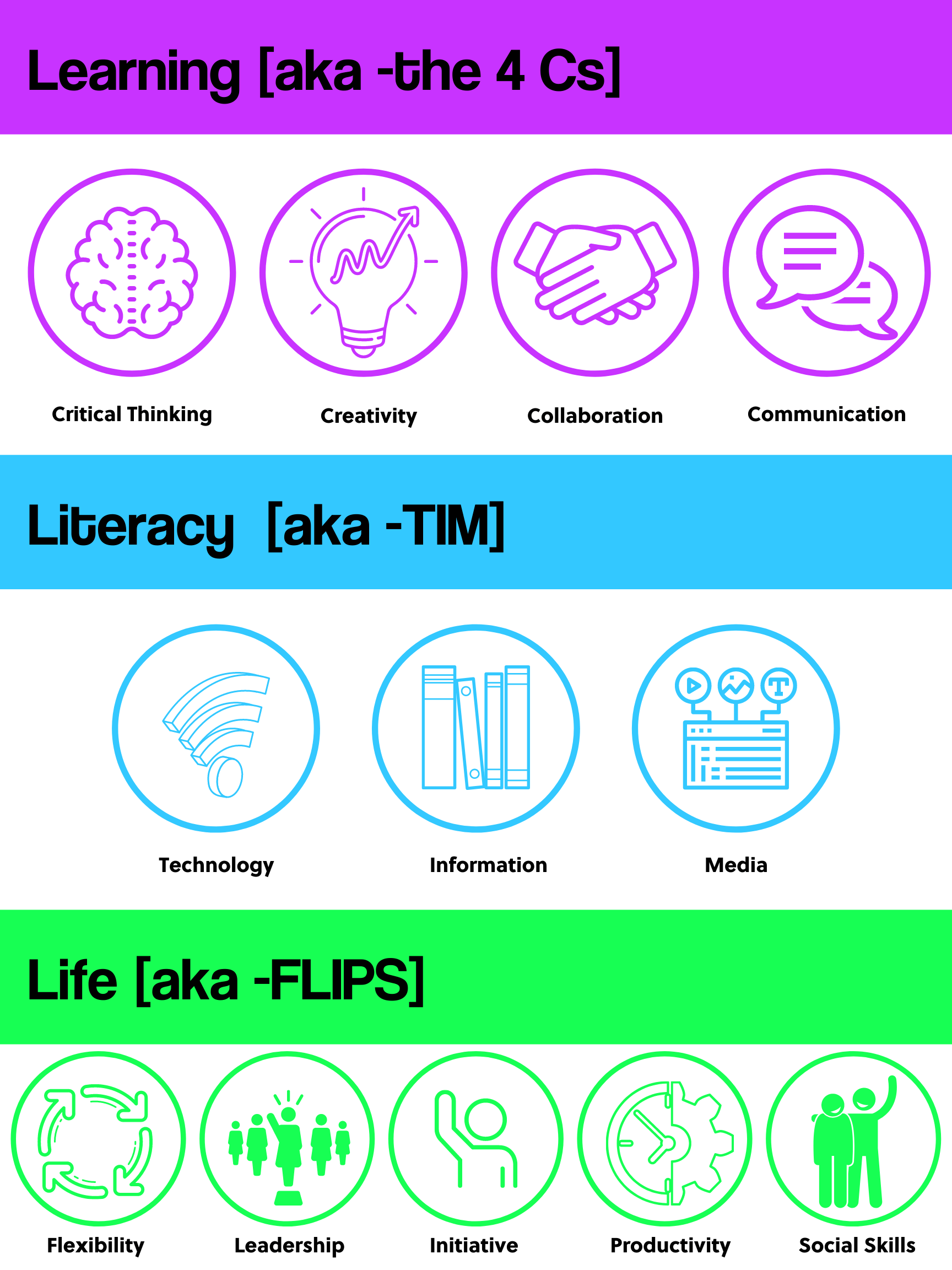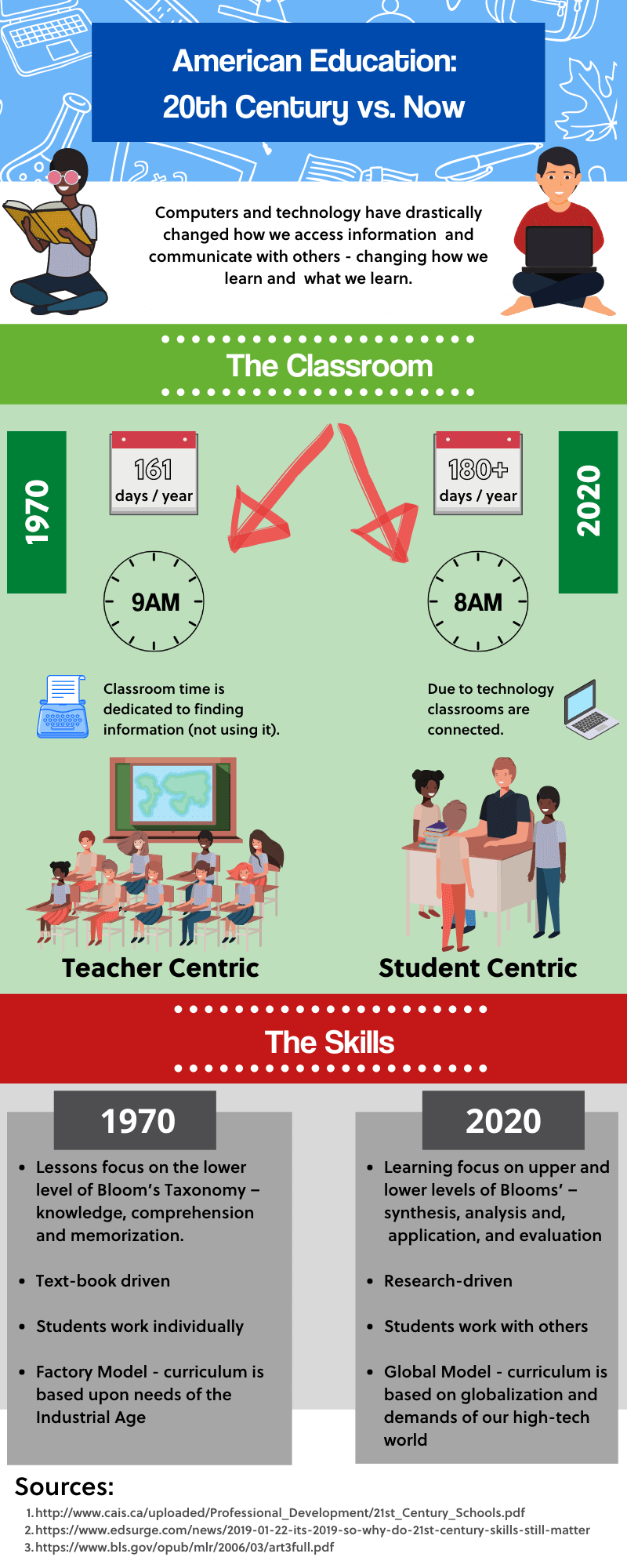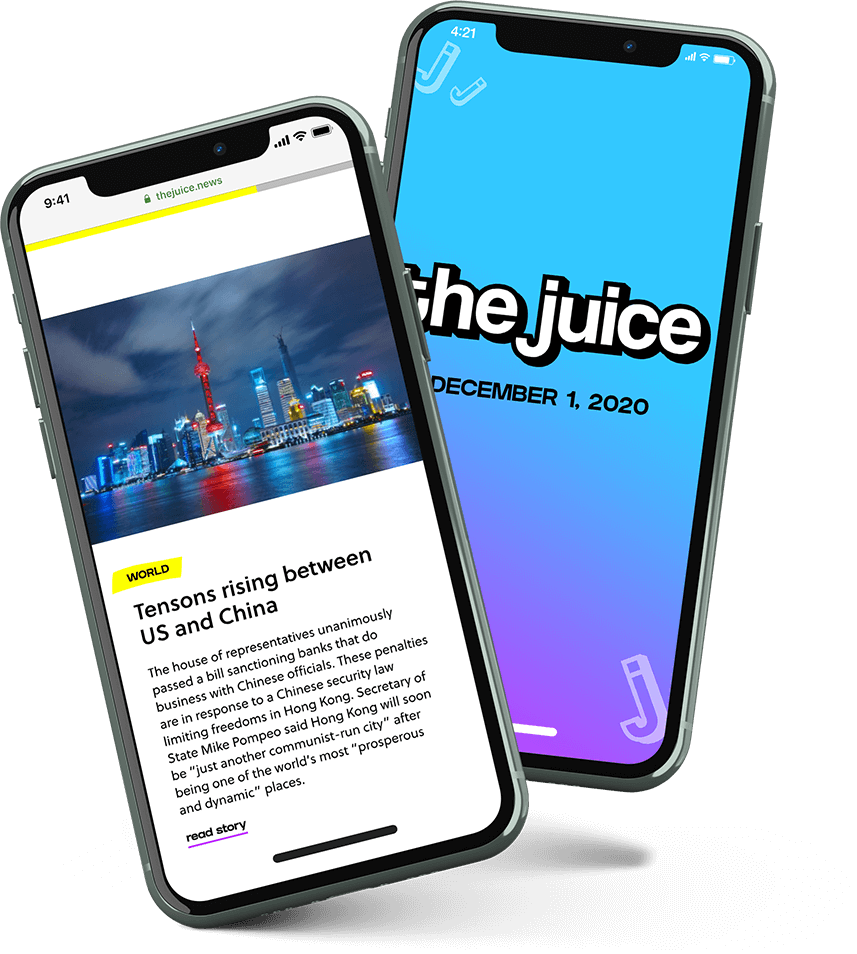The standards for our students to succeed in the workplace have drastically changed since the turn of the 21st Century. Our economy, once centered on narrow trade and skill-specific (and mostly manual) work, now depends on citizens with interdisciplinary skills and cross-cultural awareness to lead innovation and further our global growth. During the 20th Century or the Industrial Age, students learned a trade, how to follow directions, the importance of working hard, and what it meant to act professionally. Then, being professional meant efficient, prompt, honest, and fair.
To hold a job in today’s information-age and succeed at it, students also need to learn how to solve problems creatively, collaborate and communicate with co-workers, utilize technology, and think about issues critically. 21st Century skills will equip students to adapt to and succeed in the ever-changing world influenced by one of the most powerful sources of knowledge and information: the internet.
The Twelve 21st Century Skills
21st Century skills consist of twelve skills which are grouped into three sections: Learning, Literacy, and Life.

What Will Students Need to Know in 20 Years?
“21st Century skills” are those that will prepare students to succeed both today and 20 years from today. It’s hard to predict the jobs that will exist in five years, let alone 20, but we can anticipate the skills needed for students to be successful in a “worldwide market that moves faster by the day.”
In order to succeed in our technologically driven and ever-advancing economy, students will need higher-order cognitive skills that are transferable and adaptable to our changing society. These include, but are not limited to: cognitive skills, interpersonal skills, system thinking, empathy, critical thinking, collaboration, and determination (pp. 8).
The 20th Century Classroom
We are 19% through the 21st century, and innovation and new technology has already made professions that sustained families during the 20th century not only difficult to find, but obsolete. For example, people were once hired to work as “pinsetters,” or someone who would realign bowling pins after each round; now bowling pins are automatically swept away and replaced by a sensor and automatic machine.
During the 20th-century’s Industrial Age, individuals had fewer career options making paths to success limited. The job market mostly consisted of manufacturing jobs, and only those with greater social mobility had a shot at moving up from the factory floor to become a manager, administrator, or professional (pp. 13) As mass-production fueled the country’s economic growth, jobs were repetitive and monotonous. In response, schools prepared students for this uniformity and standardization.
The 20th-century classroom was teacher-centered, rather than student-centered. Students were expected to be obedient and primarily learn in isolation. Desks were often in rows and faced the front, where teachers instructed. Education was knowledge-driven and rewarded memorization and textbook-based learning.
This learning style, derived from The Industrial Age, drew families from farms to work in factories and cities. While students were expected to be literate, they learned skills that would serve them in these future careers. Their classroom environment reflected what their work would most likely consist of. Students were expected to “contribute one piece of a long chain of production and distribution,” and were prepared for this in the classroom (pp. 14)
However, the end of the Industrial Age and shift to the Information Age has brought a stark contrast to our previous methods of teaching, and therefore, new priorities in the classroom.
How the Changing World Affects the Classroom
The 21st century has been shaped by the internet, big data, automation, and globalization. Unlike 20th century workers who specialized in one area, 21st century workers have endless career options and will likely be tasked with a broader range of responsibilities. As a result, general skills that are transferable across positions will be valued more than the specific skills expected during the 20th century.
21st Century skills prepare students for this complexity. They provide students with a broad range of capabilities that can shift as the professional scene changes.

It’s difficult to foresee what jobs will exist in the future. For instance, current job titles such as “Director of Cloud Transformation” or “Influencer” didn’t exist 10 years ago, but play important roles for different markets today. In preparing students, classrooms need to focus on giving students the skills to prepare for the inevitably changing job field.
Classrooms have begun to adapt to teach these skills. For example, classrooms are now student-centered and instruction includes a variety of methods. Giving students agency in the classroom and engaging in diverse activities will help them develop 21st Century skills.
21st Century Skills at a Global Level
21st Century skills are designed not only to help students succeed in the classroom and the workplace but also to prepare students to become global contributors. With the internet, we can connect with and learn from people located all over the world.
21st Century skills will prepare students to work and interact in a world becoming more connected by the day. Skills like effective communication, flexible thinking, and information literacy can prepare students to adjust to new cultures and forms of communication. For example, the pandemic this year has shown the world that many companies need to give employees access to remote work, and employees had to prove they could adjust, communicate, and work effectively from home. Valuable employees will prove to be adaptable to curve balls thrown at them, while remaining positive and keeping an open mind.
As our world becomes more connected by the internet, the ability to use various technologies and to communicate well while using them will help students interact with coworkers and peers they may never meet face-to-face. Giving students the opportunity to grow these skills will make global connections and change feel as normal as the traditional office setting (pp. 51-75).
How Do We Help Students Develop 21st Century Skills?
Teachers and parents can begin preparing their students by encouraging the development of 21st Century skills through lesson plans and dinner table discussions. As we begin to incorporate these skills into the classroom and the home, we must teach both knowledge and skills. When knowledge is taught without skills, as it was in the 20th century, it is difficult to deeply absorb information, and therefore, transfer it to new situations. However, to fully understand a skill and its effectiveness, it should be paired with knowledge and education about the skill.
When teaching 21st Century skills, it is important to emphasize “questions and the process to uncover their answers,” and “problems and the inventing of their possible solutions” (pp. 90). Prompts and activities that encourage critical thinking, problem solving, and research will contribute most to the building of 21st Century skills. Open-ended questions and intriguing problems will spark students’ imaginations and motivate them to explore, discover, and learn for themselves (pp. 94). To build 21st Century skills, students should be encouraged to try out different approaches to learning. Once a student understands how they learn best, it becomes easier for them to plan ahead, ask useful questions, and critique themselves effectively.
Even though the future of our economy is uncertain, we can be certain of change. If we can prepare students for this change, by teaching adaptable and transferable skills, we will have prepared them.
The Juice
The Juice is designed to easily incorporate current events into the classroom and help students develop 21st Century Skills, such as problem solving, empathy, critical thinking, and reasoning. Teachers and parents can use The Juice to help students become thoughtful communicators and listeners through our daily stories, resources, and assessment tools.

